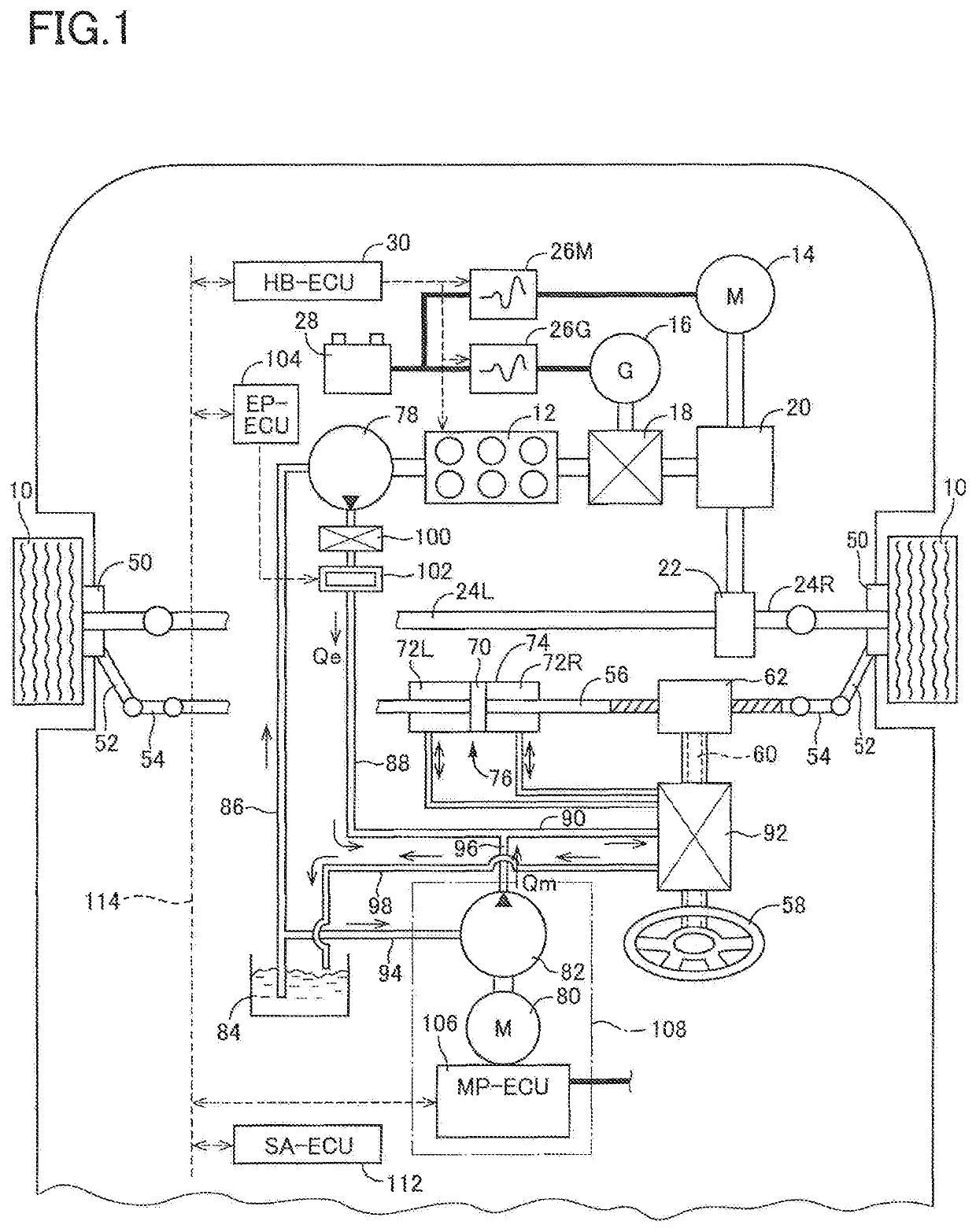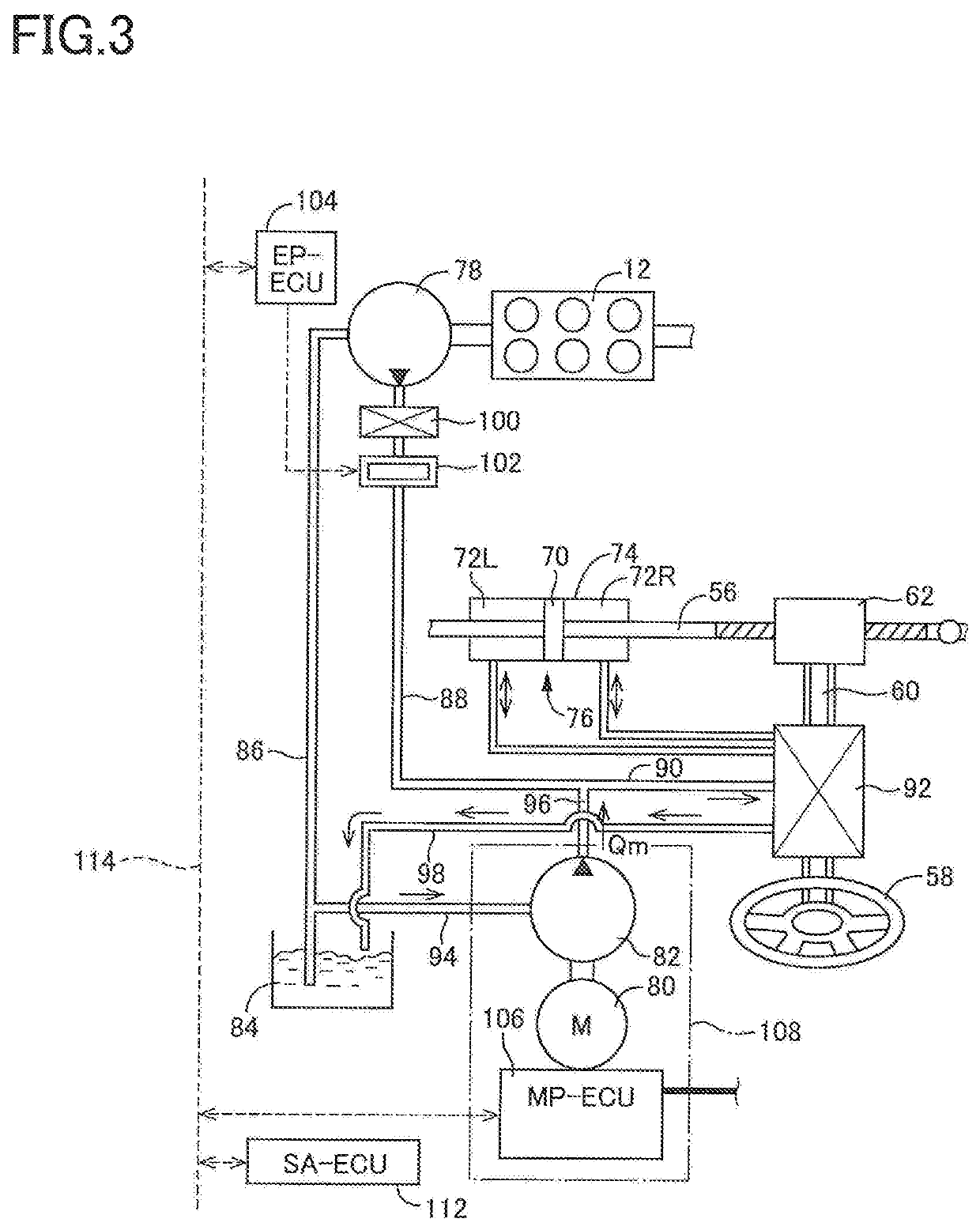Steering assist system
a technology of steering assist and steering force, which is applied in the direction of power steering, fluid steering, vehicle components, etc., can solve the problems of unfavorable driver's adds limitations as to the overall structure of the assist system, and suffers from an influence of a change, etc., to achieve smooth assist switching and simple manner
- Summary
- Abstract
- Description
- Claims
- Application Information
AI Technical Summary
Benefits of technology
Problems solved by technology
Method used
Image
Examples
Embodiment Construction
[0044]A steering assist system according to one embodiment of the present disclosure will now be explained in detail with, reference to the drawings. It is to be understood that the disclosure is not limited to the details of the following embodiment but may be changed and modified based on the knowledge of those skilled in the art.
[A] Structure of Vehicle on Which Steering Assist System is Installed
[0045]As shown in FIG. 1, a vehicle on which a steering assist system according to the present embodiment is installed has four wheels 10, namely, front right and left wheels and rear right and left wheels. In FIG. 1, the two rear wheels are not illustrated. The two front wheels 10 are drive wheels. The vehicle is a hybrid vehicle whose front wheels 10 can be driven by both of an engine 12 and a drive motor 14 as an electric motor. The front wheels 10 are steerable wheels. In the following description, the steering assist system will be simply referred to as “assist system” where appropr...
PUM
 Login to View More
Login to View More Abstract
Description
Claims
Application Information
 Login to View More
Login to View More - R&D
- Intellectual Property
- Life Sciences
- Materials
- Tech Scout
- Unparalleled Data Quality
- Higher Quality Content
- 60% Fewer Hallucinations
Browse by: Latest US Patents, China's latest patents, Technical Efficacy Thesaurus, Application Domain, Technology Topic, Popular Technical Reports.
© 2025 PatSnap. All rights reserved.Legal|Privacy policy|Modern Slavery Act Transparency Statement|Sitemap|About US| Contact US: help@patsnap.com



